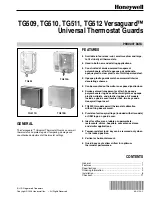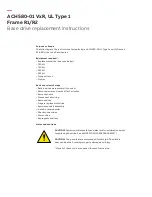
4big Quadra USB 3.0 User Manual
26
FORMATTING AND PARTITIONING
Standard LaCie storage devices will prompt you to run LaCie Setup Assistant when they are first connected to a
computer (Windows or Mac). LaCie Setup Assistant helps you to quickly format the storage device according to
your needs.
Please read the information below carefully if you:
Abort LaCie Setup Assistant while it is formatting.
■
Wish to reformat your storage device after LaCie Setup Assistant has successfully completed.
■
Own a LaCie storage device that does not feature Setup Assistant (for example, select LaCie USB keys or RAID
■
devices).
ABOUT FILE SYSTEM FORMATS
Windows Users
exFAT: exFAT is an acronym for Extended File Allocation Table, a file system developed for flash drives. It is
increasingly being used as an alternative to FAT32, which limits file sizes to 4GB, volumes to 2TB, and restricts
characters in file names. It is therefore an excellent cross-platform file system. It is, however, only compatible
with Windows XP and later OS, and Mac OS X 10.6.5 and later.
FAT 32: FAT is an acronym for File Allocation Table, which dates back to the beginnings of DOS programming.
Originally, FAT was only 16 bits, but after the second release of Windows 95 it was upgraded to 32 bits, hence
the name FAT 32. In theory, FAT 32 volume sizes can range from less than 1MB all the way to 2TB.
It is the native file system of Windows 98 and Windows Me, and is supported by Windows 2000, Windows XP,
Windows Vista, and Windows 7. When FAT 32 is used with Windows 2000, Windows XP, Windows Vista, and
Windows 7 however, volume size is limited to 32GB (by the Windows partition utility, i.e. Disk Manager), and the
individual file size is limited to 4GB.
NTFS: This acronym stands for New Technology File System, and it is the native file system for Windows NT,
2000, XP, Vista, and 7. NTFS offers several features that are not available with FAT 32: file compression,
encryption, permissions, auditing, and mirroring drives. The minimum supported volume size for NTFS is 10MB
with a maximum of 2TB when initialized in the MBR format. The more recent GPT format does not assign limits
to file or partition sizes. Volumes created in NTFS are native read and write for Windows NT, 2000, XP, Vista, and
7. Earlier versions of Windows and Mac OS X 10.5 or higher may read and write to the NTFS partitions with the
help of third-party drivers.
















































